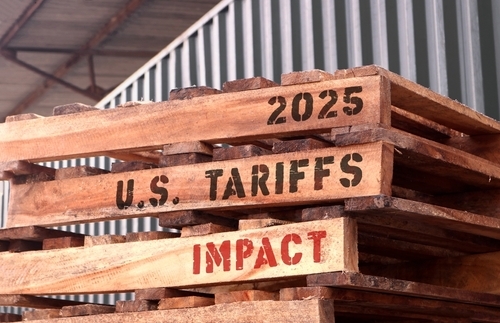Partner Content From:

Tariffs were almost certainly the flavor of the week over the last period. These taxes on imported goods are sending shockwaves through markets, upending pricing strategies, shaking consumer confidence and altering competitive dynamics. For marketers, I think we’re all facing an increasingly chaotic environment where more questions will be asked of marketing spend and decision-making than ever.
Tariffs and changes to economic policy shift the market mix in three distinct ways.
- Changing Price Points: By increasing the cost of imported goods, tariffs force businesses to decide whether to absorb these costs or pass them on to consumers. Either way, profitability and sales are affected.
- Disrupting Consumer Confidence: Uncertainty about price hikes or product availability can make consumers hesitant, especially for high-value purchases, slowing down demand.
- Shifting Market Dynamics: As some goods become more expensive and others relatively cheaper, consumer preferences and competitive landscapes change, often unpredictably.
Together, these effects contribute to rapidly evolving market conditions, leaving marketers scrambling to adjust. The question every marketer faces is clear: How do we adapt to this new reality?
As this happens, success depends on understanding how these external pressures are reshaping your specific business environment or your micro-economics. Given the complexity of most markets that enterprises operate in, this requires not just intuition, but data-driven insights that reveal when and how to pivot your marketing mix.
Enter Modern MMM [Marketing Mix Modeling]
While traditional models focused on optimizing spend across marketing channels—think TV, digital, or print—modern MMM goes further by integrating complex economic signals, such as tariff policies. And it does it lightning fast with insights at near real-time.
What this unlocks for you:
- Model Direct Impacts: Understand how tariffs affect your supply chain costs, pricing and sales.
- Capture Indirect Effects: Assess how shifts in consumer confidence or competitor pricing ripple through your market.
And by embedding these economic factors into the analysis, modern MMM provides a holistic view of your marketing performance, bridging the gap between macro-economic trends and micro-economic outcomes.
Looking ahead, we envision a future where every CMO can query these advanced models in real time. Picture this question: “How will a 15% tariff on imported components affect our holiday campaign?” — with the answer in seconds. We’ve been building Growth Co-pilots to do exactly that, turning MMM insights into actionable intelligence.
The long-term vision is to turn economic shocks, which have typically disrupted marketers, into moments of clarity. We think that by building rapid, granular MMMs with deep economic variables, we’ll both be able to help marketers adjust faster, and also respond confidently in times of economic disruption. And they’ll be able to do it in a prompt via their Growth Co-pilot.
If this future excites you, get in touch. We’d love to chat with you.






